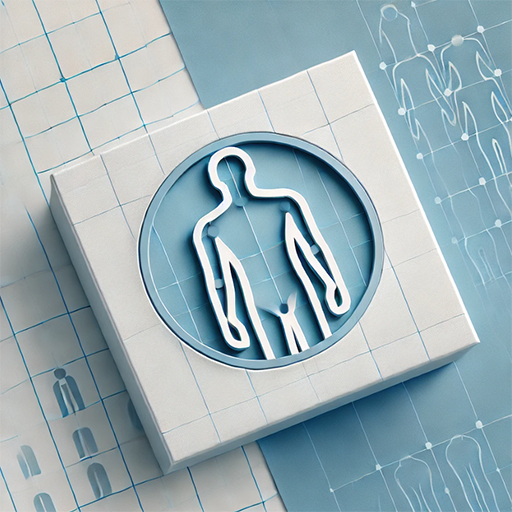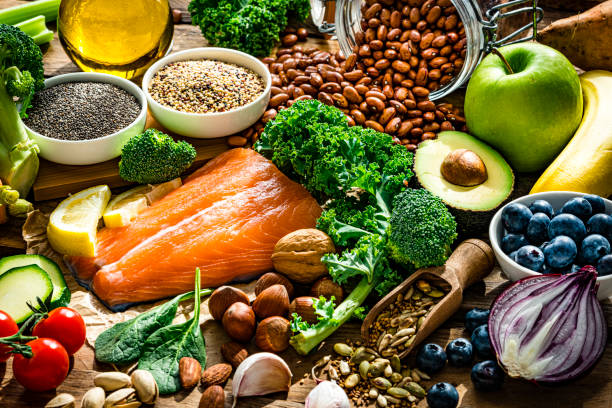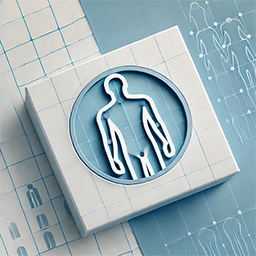What Is the Atkins Diet?
The Atkins Diet is a well-known low-carb eating plan designed to help with weight loss and improve overall health. Developed by Dr. Robert Atkins in the 1970s, this diet focuses on reducing carbohydrate intake while increasing protein and healthy fats. By limiting carbs, the body shifts into a metabolic state called ketosis, where it burns stored fat for energy instead of relying on glucose from carbohydrates.
One reason the Atkins Diet remains popular worldwide is its effectiveness in promoting weight loss and long-term health. Unlike traditional low-fat diets that can leave people feeling hungry, Atkins encourages eating satisfying, nutrient-rich foods that help control appetite. This approach not only supports weight management but may also improve blood sugar levels, boost energy, and enhance overall well-being.
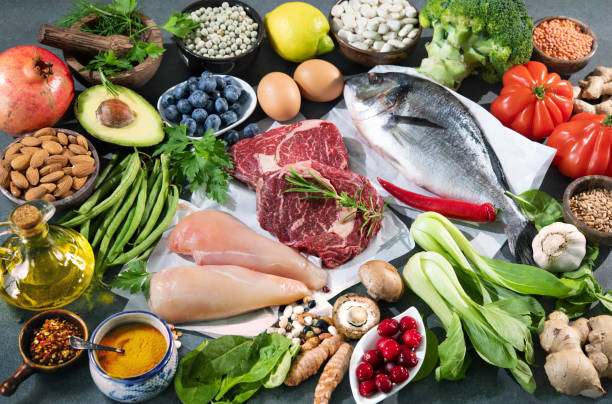
The Four Phases of the Atkins Diet
The Atkins Diet consists of four phases, each with specific guidelines to help you transition into a sustainable low-carb lifestyle.
1. Induction Phase (Phase 1)
- Lasts for at least two weeks
- Limits carbohydrate intake to 20-25 grams per day
- Focuses on protein, healthy fats, and low-carb vegetables
- Encourages the body to enter ketosis for rapid fat burning
- Foods to eat: meat, fish, eggs, cheese, leafy greens, healthy oils
This phase is the most restrictive but also the most effective for jumpstarting weight loss. By cutting out nearly all carbohydrates, your body switches to burning fat for energy. Many people experience a significant drop in weight within the first two weeks.
2. Balancing Phase (Phase 2)
- Gradually increases carb intake by 5 grams per week
- Introduces nuts, seeds, berries, and some dairy products
- Helps identify the right carb level for continued weight loss
- Foods to eat: almonds, strawberries, Greek yogurt, cottage cheese
The goal of this phase is to reintroduce some healthy carbs while continuing to lose weight. This helps prevent the common problem of regaining weight after rapid loss in the Induction Phase.
3. Pre-Maintenance Phase (Phase 3)
- Carb intake increases to 50-80 grams per day
- Includes whole grains, legumes, and starchy vegetables in moderation
- Focuses on finding the balance between weight loss and maintenance
- Foods to eat: quinoa, lentils, carrots, sweet potatoes
At this stage, the body becomes more adaptable to carbs, and weight loss begins to slow. It’s important to track how different foods affect your weight and energy levels.
4. Lifetime Maintenance (Phase 4)
- Allows more flexibility while keeping carbs in check
- Encourages a sustainable, low-carb lifestyle
- Focuses on long-term weight management and overall health
- Foods to eat: all previously allowed foods in balanced portions
The key to success in this phase is maintaining healthy eating habits. Since Atkins is not just a short-term diet but a lifestyle change, it’s essential to find a balance that allows you to enjoy your favorite foods without compromising your health.
Benefits of the Atkins Diet
Many people choose the Atkins Diet because of its wide range of health benefits. This low-carb approach not only helps with weight management but also supports overall well-being. Some of the key advantages include:
✅ Weight Loss – By cutting back on carbohydrates, the body burns stored fat more efficiently, leading to effective weight loss.
✅ Better Blood Sugar Control – Lowering carb intake helps stabilize blood sugar levels, reducing the risk of type 2 diabetes.
✅ Improved Heart Health – The diet promotes healthy fats, which can help raise good cholesterol (HDL) and lower bad cholesterol (LDL).
✅ Reduced Cravings – A high-protein, high-fat diet helps keep you full longer, curbing hunger and minimizing unhealthy cravings.
✅ Higher Energy Levels – Many followers report increased energy and fewer blood sugar crashes throughout the day.
Additionally, a low-carb lifestyle has been linked to better brain function, reduced inflammation, and improved digestion. Research from the Harvard T.H. Chan School of Public Health suggests that lowering carbohydrate intake can have a positive impact on metabolic health, making Atkins a sustainable option for many people.
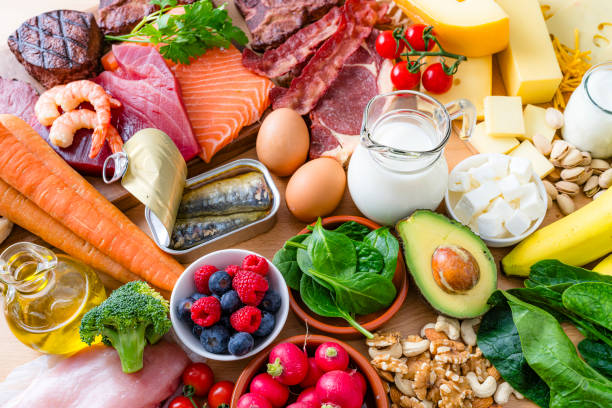
What Can You Eat on the Atkins Diet?
The Atkins Diet focuses on whole, nutrient-dense foods while limiting processed carbs. Here are some examples of foods you can enjoy:
Proteins:
- Chicken
- Beef
- Pork
- Fish (salmon, tuna, cod)
- Eggs
Healthy Fats:
- Avocados
- Nuts and seeds
- Olive oil
- Coconut oil
- Butter
Low-Carb Vegetables:
- Spinach
- Kale
- Broccoli
- Cauliflower
- Bell peppers
Dairy (in moderation):
- Cheese
- Greek yogurt
- Heavy cream
- Cottage cheese
Foods to Avoid:
- Bread, pasta, and rice
- Sugary snacks and desserts
- Processed foods
- High-carb fruits like bananas and grapes
Eating whole, unprocessed foods is key to success on the Atkins Diet. By choosing high-quality proteins, fats, and vegetables, you can maximize the health benefits of this plan.
Sample Meal Plan for Beginners
If you’re new to the Atkins Diet, here’s a simple meal plan to get you started:
Day 1:
- Breakfast: Scrambled eggs with spinach and cheese
- Lunch: Grilled chicken salad with olive oil dressing
- Dinner: Baked salmon with roasted Brussels sprouts
- Snack: Handful of almonds
Day 2:
- Breakfast: Avocado and bacon omelet
- Lunch: Tuna salad lettuce wraps
- Dinner: Beef stir-fry with bell peppers and zucchini
- Snack: Cheese and cucumber slices
Day 3:
- Breakfast: Greek yogurt with chia seeds and walnuts
- Lunch: Chicken and avocado salad
- Dinner: Grilled shrimp with cauliflower rice
- Snack: Hard-boiled egg
Potential Side Effects and How to Manage Them
While the Atkins Diet is effective, some people experience side effects when first starting. These may include:
- Keto Flu: Symptoms like headaches, fatigue, and dizziness as your body adapts to burning fat instead of carbs.
- Digestive Issues: Some people experience constipation due to reduced fiber intake.
- Bad Breath: A common side effect of ketosis.
How to Minimize Side Effects:
- Drink plenty of water to stay hydrated.
- Eat fiber-rich, low-carb vegetables to support digestion.
- Consume electrolytes (sodium, potassium, magnesium) to reduce keto flu symptoms.
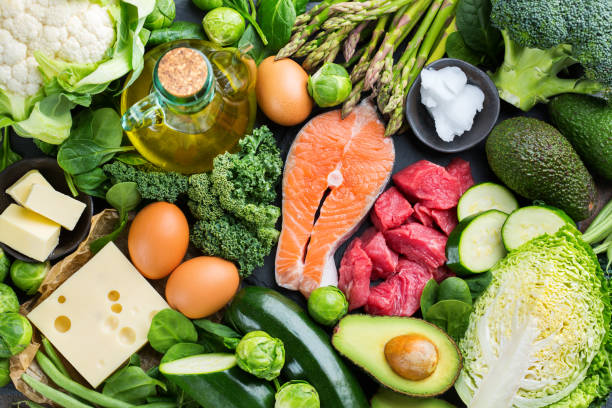
Is the Atkins Diet Right for You?
The Atkins Diet can be a great option for those looking to lose weight, manage blood sugar levels, and reduce cravings. Its low-carb approach helps the body burn fat more efficiently while keeping you full and satisfied. However, this diet may not be the best fit for everyone. People with certain health conditions, such as kidney disease or metabolic disorders, should consult a doctor before making significant dietary changes.
If you’re interested in trying Atkins, start by gradually cutting back on high-carb foods like bread, pasta, and sugary snacks. Replace them with protein sources, healthy fats, and low-carb vegetables to ease into the transition.
For more detailed research on the benefits of low-carb diets, visit Mayo Clinic and WebMD for expert insights and guidelines.
Final Thoughts
The Atkins Diet is a well-established low-carb approach that can support weight loss and overall health. By following its four structured phases, you can gradually reduce carbohydrate intake while focusing on nutrient-rich foods. This method not only helps with shedding excess weight but also promotes better blood sugar control, increased energy, and long-term wellness.
Staying consistent and making healthy food choices are key to seeing results. Whether your goal is to lose weight, improve metabolism, or simply adopt a healthier lifestyle, the Atkins Diet provides a flexible and sustainable way to achieve lasting success.
Have you tried the Atkins Diet? Share your experience in the comments below! And if you found this guide helpful, don’t forget to share it with friends who might be interested in a low-carb lifestyle.

